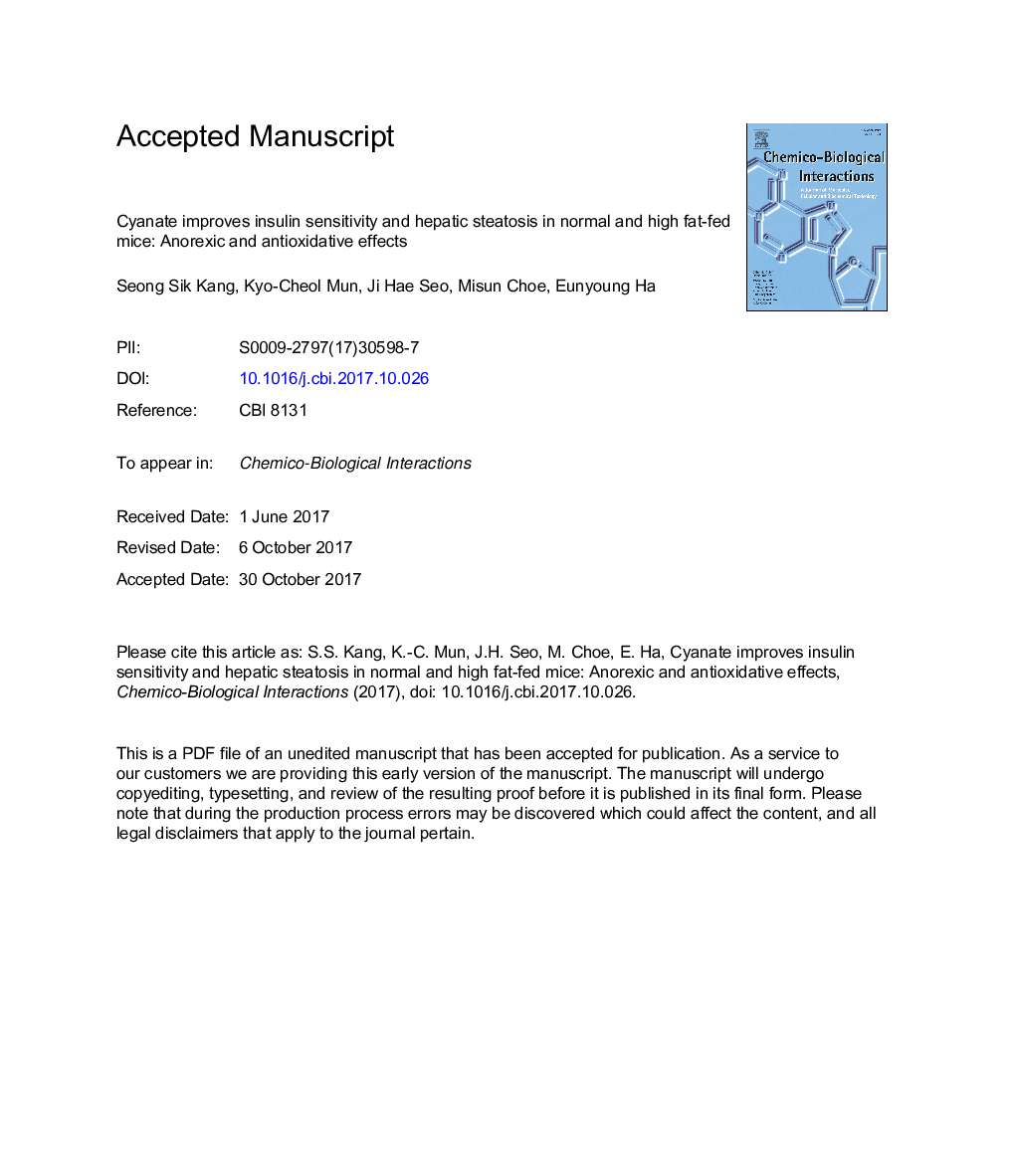| Article ID | Journal | Published Year | Pages | File Type |
|---|---|---|---|---|
| 8545268 | Chemico-Biological Interactions | 2018 | 36 Pages |
Abstract
Obesity is an important contributing factor to progression of chronic kidney disease. Cyanate, known as uremic toxin, is an electrophile produced spontaneously from urea or by myeloperoxidase-catalyzed oxidation of thiocyanate. Herein, we explored metabolic effects of cyanate in normal chow diet (NCD)- and high fat diet (HFD)-fed mice. Mice were treated with cyanate (1Â mg/mL in drinking water) and fed NCD or HFD. Peritoneal glucose tolerance test (PGTT) and insulin tolerance test (ITT) were performed. Blood urea nitrogen (BUN) and creatinine concentrations were determined. Kidney and liver tissues were analyzed for reactive oxygen species (ROS) and lipid accumulations. Human albumin was carbamylated and evaluated for ROS scavenging activities. Contrary to our expectations, we found that cyanate treatment improved increased insulin sensitivity and alleviated hepatic steatosis in NCD- and HFD-fed mice. PGTT and ITT revealed faster and immediate glucose clearance in cyanate-treated NCD- and HFD-fed mice. Histological analysis of kidney and serum levels of BUN and creatinine showed no significant differences between cyanate-treated and control mice groups. Cyanate treatment reduced appetite and body weight in both NCD- and HFD-fed mice groups. Cyanate also decreased lipid peroxidation levels in the sera and the kidney, attenuated ROS levels in the kidney, which lead us to the findings that cAlb significantly reduced ROS levels compared to Alb in Caki-1 kidney and human umbilical vein endothelial cells. The results in this study may indicate that cyanate improves insulin sensitivity and hepatic steatosis possibly via exerting anorexic and antioxidative effects.
Related Topics
Life Sciences
Environmental Science
Health, Toxicology and Mutagenesis
Authors
Seong Sik Kang, Kyo-Cheol Mun, Ji Hae Seo, Misun Choe, Eunyoung Ha,
